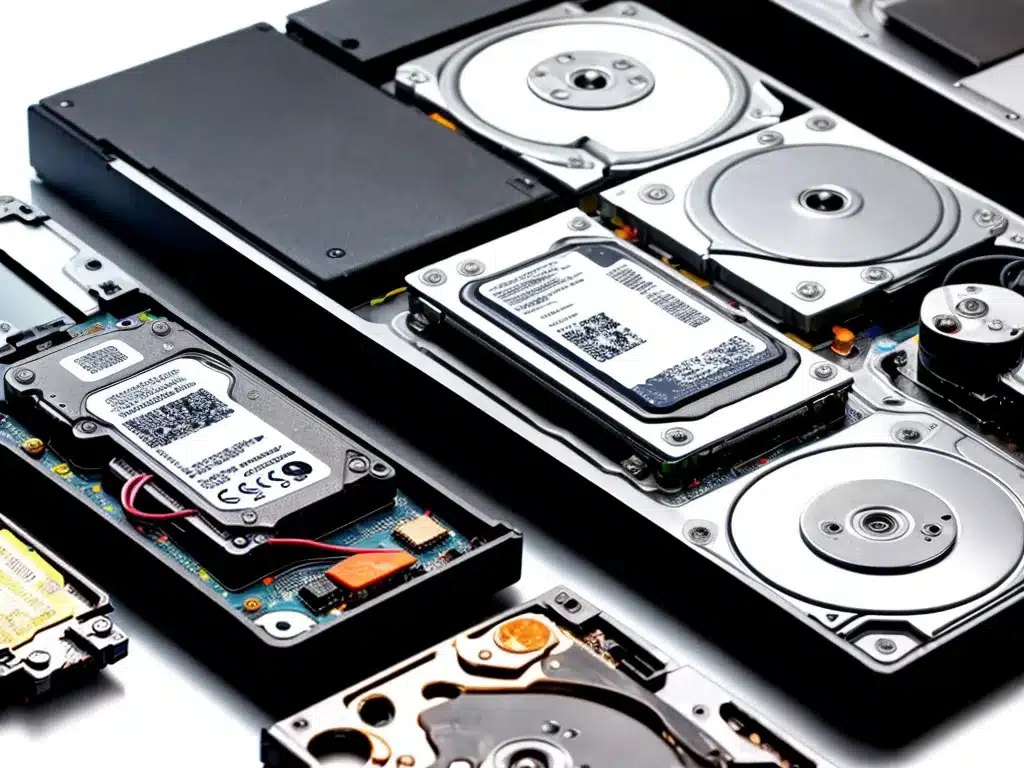
Introduction
Solid state drives (SSDs) are gaining popularity for their speed, durability, and reliability compared to traditional hard disk drives (HDDs). However, like any storage device, SSDs can and do fail unexpectedly. When an SSD fails, the data stored on it can become inaccessible.
Recovering data from a failed SSD may seem daunting, but with the right tools and techniques, the chances of successful data recovery are good. In this article, I’ll provide an in-depth guide on how to recover data from a failed SSD in 2024.
Determining the Cause of SSD Failure
The first step is to determine why the SSD failed in the first place. This can help guide the recovery process. Some common causes of SSD failure include:
- Firmware bugs – Bugs in the SSD’s firmware can lead to malfunctions.
- Overheating – Excessive heat can damage NAND flash memory chips.
- Power surges – Surges during power cycling can short circuit components.
- Controller failure – The SSD’s controller chip can fail, blocking access.
- Physical damage – Drops, impacts, etc. can damage the SSD.
Isolating the failure cause will inform next steps. For example, physical damage requires data recovery specialists, while controller bugs may be fixable with updated firmware.
Recovering Data from Logical SSD Failures
Logical failures occur when the SSD’s file system or software components become corrupted. The physical SSD may be fine. Logical failures represent the majority of SSD issues.
To recover data from a logically failed SSD:
-
Connect the SSD to another computer via SATA or a USB interface. If detected, the operating system may automatically scan and repair errors.
-
Boot into safe mode and attempt to access the SSD. Safe mode loads minimal drivers which may bypass problems.
-
Update SSD firmware to the latest available version which can fix bugs. Consult your SSD vendor’s website.
-
Try data recovery software like Disk Drill or EaseUS which can scan SSDs and recover lost files.
-
As a last resort, send to a data recovery service like DriveSavers who employ specialized tools and cleanroom facilities.
Following these software-based tips often resolves logical SSD failures and returns access to data.
Recovering Data from Physical SSD Failures
For physical SSD failures where components have been damaged, more involved techniques are required:
-
Open the SSD case carefully and inspect for visible issues like burnt circuitry. Specialized tools can read raw NAND flash chips.
-
Swap controller board – SSDs have a detachable controller board that can be exchanged with a matching working unit. This repairs certain failures.
-
Professional data recovery – For advanced recoveries, companies like Gillware can manually extract NAND flash chips and reconstruct data with custom tools.
-
Clean room disassembly – In a dust-free cleanroom, the SSD is taken apart layer-by-layer and parts are transferred to a working SSD chassis for data extraction.
While physical damage often necessitates professional SSD recovery services, DIY methods can also succeed if done carefully. The exact approach depends on the SSD model and failure type.
Best Practices to Avoid SSD Failure
Following best practices helps avoid SSD failures and data loss in the first place:
-
Keep firmware updated – Use the latest firmware from your SSD vendor for bug fixes and performance improvements.
-
Monitor SSD health – Tools like CrystalDiskInfo check drive health stats like lifespan and bad sectors.
-
Maintain temperature – Ensure SSDs are properly cooled to prevent overheating. Case airflow and heatsinks help.
-
Use surge protection – Protect SSDs from electrical surges which can damage sensitive components.
-
Backup data – Maintain backups of important data so it can be restored if an SSD fails. The cloud or external drives offer backup options.
Conclusion
Recovering data from failed SSDs is possible in most cases by using the techniques outlined here. Logical failures can often be fixed with software tools while physical failures may require professional data recovery assistance. Following best practices helps prevent SSD failure and data loss. With the right approach, important data on failed SSDs can usually be successfully retrieved.












